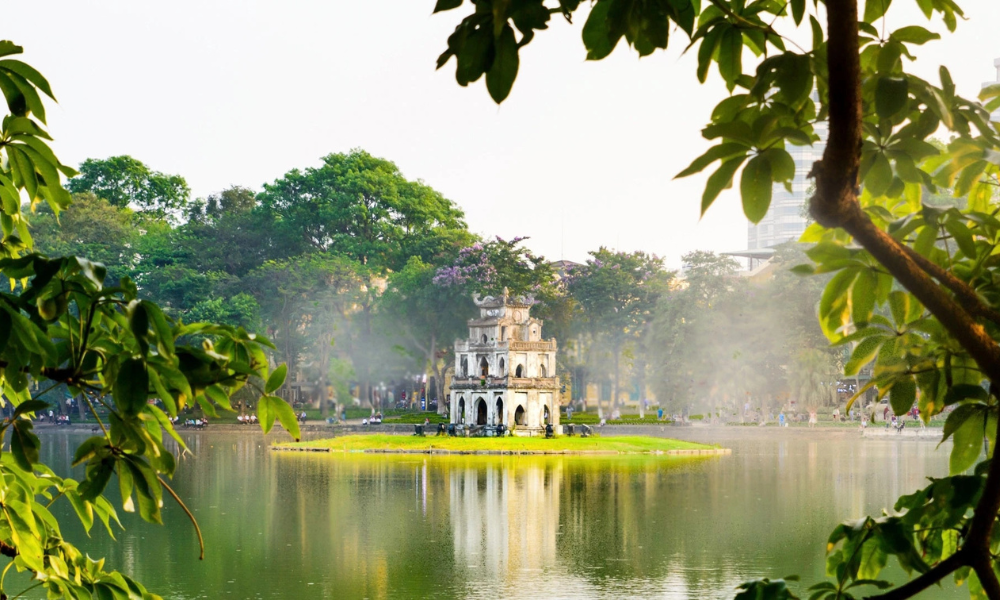
French colonial buildings, street stalls selling local specialties, motorbikes weaving through crowded streets... are the first impressions of tourists about Hanoi. For many people, Hanoi has all the interesting things to discover here in their own way.
Best Time to Visit Hanoi
The best time to travel to Hanoi is in the fall from August to November and in the spring from March to April. Many people believe that autumn is the most beautiful time of the year in Hanoi, with clear blue skies, cool breezes, falling yellow leaves, and the scent of milk flowers... In spring, the weather is warm, the streets seem to change into new clothes when trees sprout and flowers bloom ...
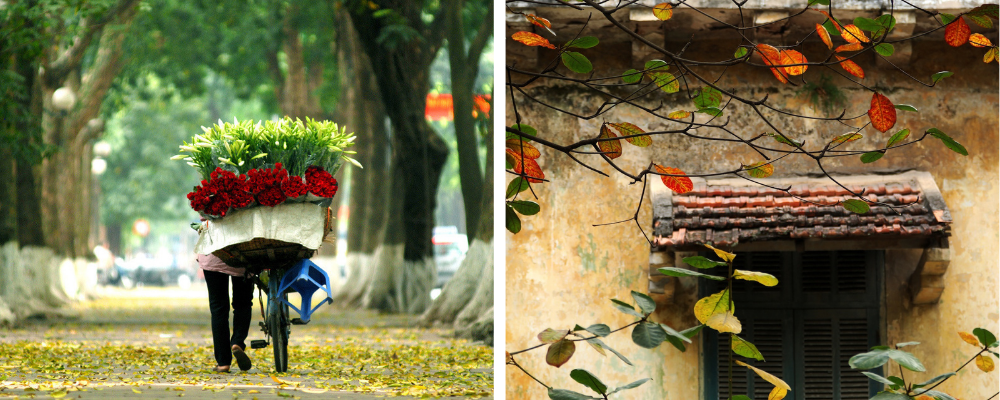
Move
Hanoi is considered the heart of Vietnam, so tourists can easily travel to the capital by plane, train, bus, private car or motorbike from other provinces.
To get around the city, you can go by car, motorbike or bicycle. But the experience will be more poetic if you sit on a cyclo to see the 36 streets, take a three-wheeled motorbike tour or an old Vespa . Another suggestion worth considering is the double-decker bus, with ticket prices ranging from 130,000 - 599,000 VND.
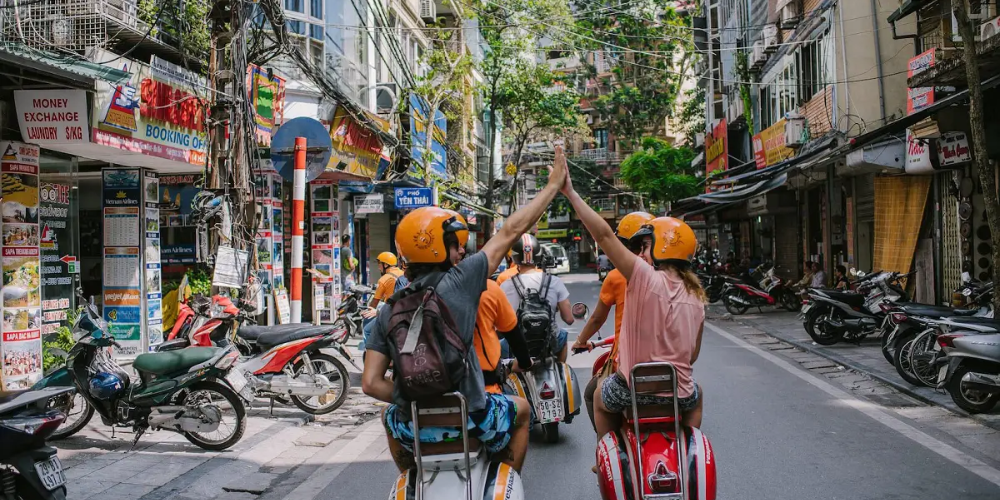
Accommodation
Hanoi has many accommodation options for tourists such as budget motels, homestays, hotels, resorts... to suit your budget and preferences. If you walk around the old town, you can rent anything from "backpacker" style beds in dorm rooms for about 100,000 VND per night, to luxury hotels for 3,000,000 - 5,000,000 VND per night.
Some special hotels include Sofitel Legend Metropole Hanoi with French colonial architecture, just a few steps from the Opera House is Hilton Hanoi Opera , Apricot Hotel right on the shore of Hoan Kiem Lake, famous hotels with views of West Lake are Sheraton Hanoi and InterContinental Hanoi Westlake , Lotte Hotel Hanoi on the top floor of the 65-storey Lotte Center building...

Top Things to Do in Hanoi
Sightseeing
Imperial Citadel of Thang Long
Thang Long Imperial Citadel is a world cultural heritage located in the heart of Hanoi and has a history of more than 1300 years. It contains unique relics and artifacts, proving the history of Thang Long - Hanoi and the history of the Vietnamese people through many eras. Address: 19C Hoang Dieu, Dien Ban, Ba Dinh.
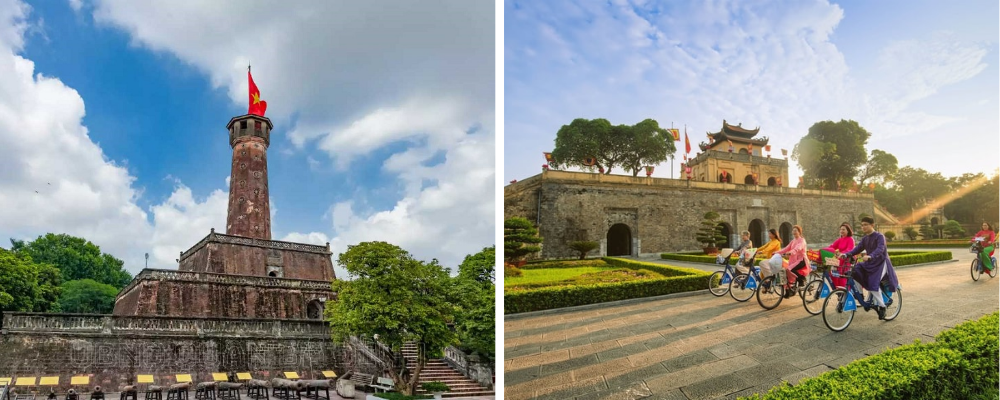
Hoan Kiem Lake
Hoan Kiem is a natural freshwater lake of Hanoi city, connecting Hang Ngang, Hang Dao, Cau Go, Luong Van Can, Lo Su streets... with the Western quarter planned by the French more than a century ago, namely Bao Khanh, Nha Tho, Trang Thi, Hang Bai, Dinh Tien Hoang, Trang Tien... Walking around the lake, in addition to enjoying the fresh nature in the middle of the city, you can visit Ngoc Son temple, the old town...

Long Bien Bridge
Not only simply spanning the two banks of the Red River, Long Bien Bridge is also a mark connecting the present and the past memories of the people who love Hanoi. Long Bien Bridge was built in 1898, and is also known by the name Song Cai Bridge or Bo De Bridge because the bridge spans Bo De Wharf, Gia Lam, Hanoi. With a length of 1,682 m and an approach bridge of 896 m, Long Bien Bridge is divided into 9 frames, each frame is 61 m long. According to the original design, the bridge has a total of 19 steel girder spans placed on 20 pillars over 40 m high.

Tran Quoc Pagoda
Located on an island east of West Lake, Tran Quoc Pagoda was once listed among the most beautiful pagodas in the world. The pagoda has a history of 1,500 years, and was the Buddhist center of Thang Long citadel during the Ly and Tran dynasties. The project was recognized as a national historical and cultural relic in 1962. In 2003, the pagoda inaugurated the 15-meter-high, 11-story lotus-shaped Luc Do Dai Sen Stupa.
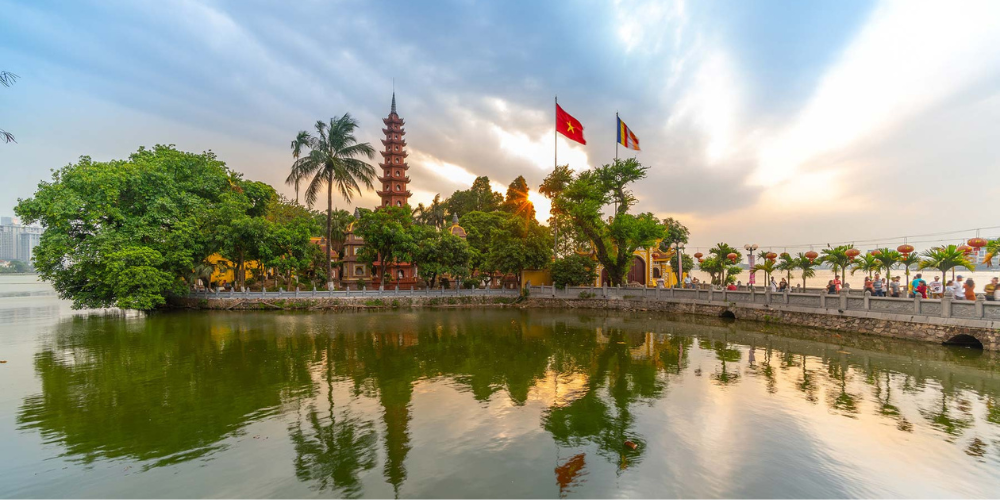
Temple of Literature - Imperial Academy
This is the first university in Vietnam. Today, visitors can visit the stone steles, the solemn campus with lotus ponds, and water lily ponds. The Temple of Literature is a rare peaceful and quiet place in the bustling city. Visitors will feel the harmony between the ancient and the modern when coming here through the thousand-year-old walls.
The Temple of Literature was built in 1070 under the reign of King Ly Thanh Tong. It was not until 1076 that King Ly Nhan Tong established the Imperial Academy.
This place also preserves many valuable artifacts and documents, especially 82 doctoral steles recognized by UNESCO as "World Documentary Heritage".
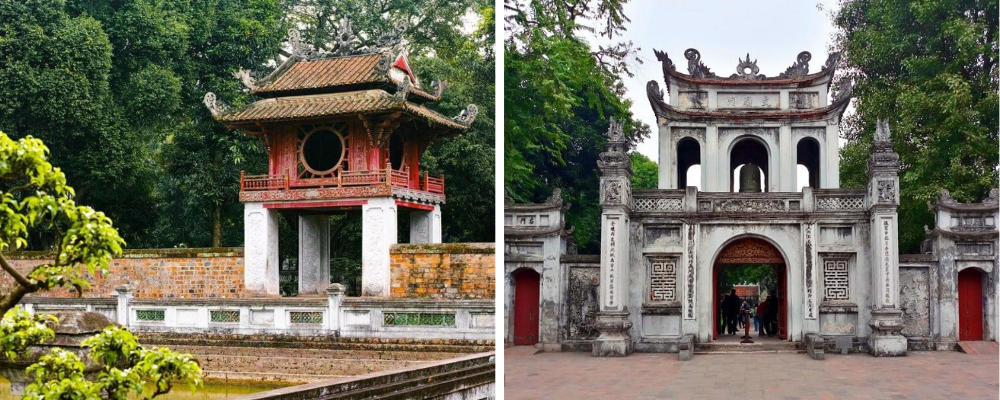
Ho Chi Minh Mausoleum
For Vietnamese people, this is one of the most important tourist attractions in the country. Visitors come to pay their respects to President Ho Chi Minh. Visitors are asked to keep quiet, wear appropriate clothing and not take photos in restricted areas.
Attending the flag-raising ceremony in the morning is a special experience at the Ho Chi Minh Mausoleum. If you miss it, you can safely take a walk around the city and come back here to participate in the flag-lowering ceremony at 9pm every night. A solemn atmosphere covers Ba Dinh Square when the loudspeaker announces the upcoming flag-lowering ceremony. People line up neatly, watching the guards solemnly lower the national flag to the music of the song "Uncle Ho is still marching with us".
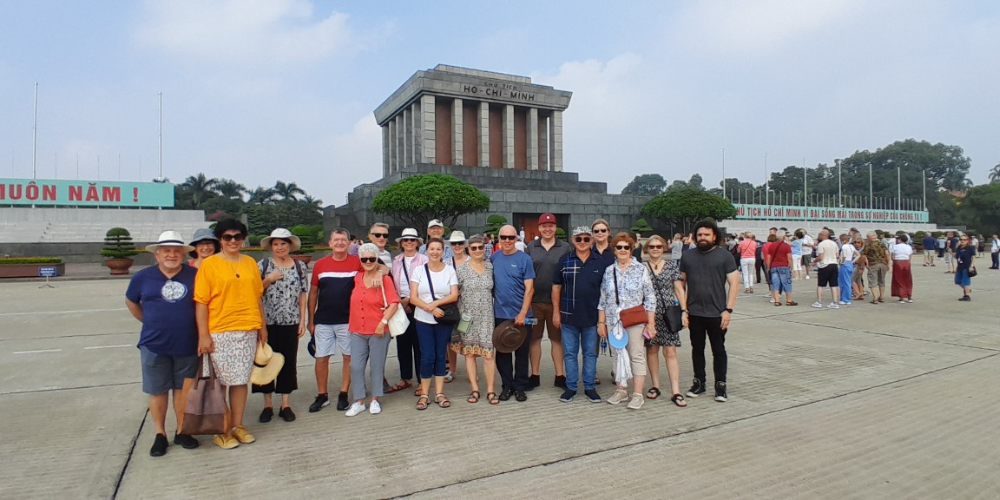
One Pillar Pagoda
The building is one of the oldest pagodas in Hanoi. It was built on a tree trunk more than 1,000 years ago. In the 1950s, the original tree trunk rotted and was replaced with a concrete pillar. Western visitors should come here to walk around this area because the surrounding residential buildings are among the most beautiful and impressive in Hanoi.

Old town
Let your feet lead the way and you will discover the most about the colorful and nostalgic streets of the capital. There is no destination, no predetermined route, just turn right, turn left or go straight. This street is full of toys, that street is full of shoes, clothes, antiques or sometimes tombstones, motorbike parts.
If you come here during rush hour, the experience is even more interesting. You always have to be ready to dodge the flow of people and vehicles on the road. Just like that, 1,000 years of Hanoi's history flows through the streets like blood in every vein, breathing into life the breath of both the past and the present.

Museum
The must-see destinations when visiting any city are museums and historical sites. One of the most visited places by tourists is the Museum of Ethnology. The Museum of Ethnology currently preserves and displays 15,000 artifacts, 42,000 documentaries, pictures and thousands of other documents about 54 ethnic groups in Vietnam.
Besides, tourists also visit the Vietnam Women's Museum , Hanoi Museum, National History Museum or Hoa Lo Prison , Hanoi Flag Tower relic... to learn about the culture and history of the city.
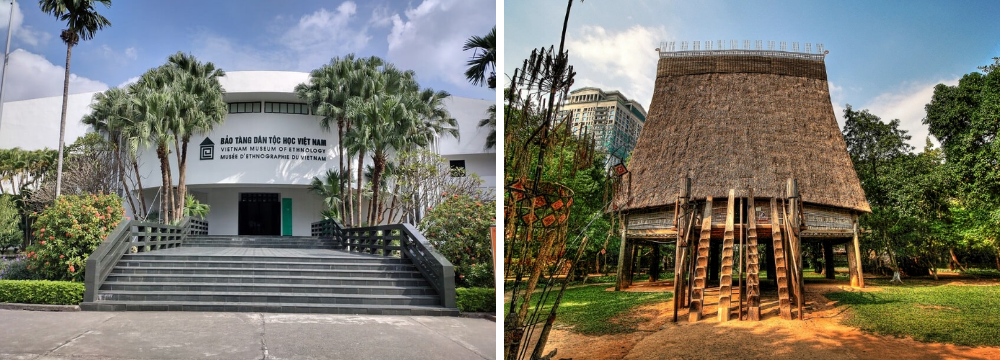
What to see
In addition to visiting scenic spots, tourists should enjoy art shows with strong national identity in Hanoi.
Water puppetry : is a performing art that tourists should see when coming to Hanoi. This art has a tradition of more than 1,000 years in Vietnam. There are two popular addresses for visitors: Thang Long Water Puppetry Theater at 57B Dinh Tien Hoang and Vietnam Water Puppetry Theater at 361 Truong Chinh.
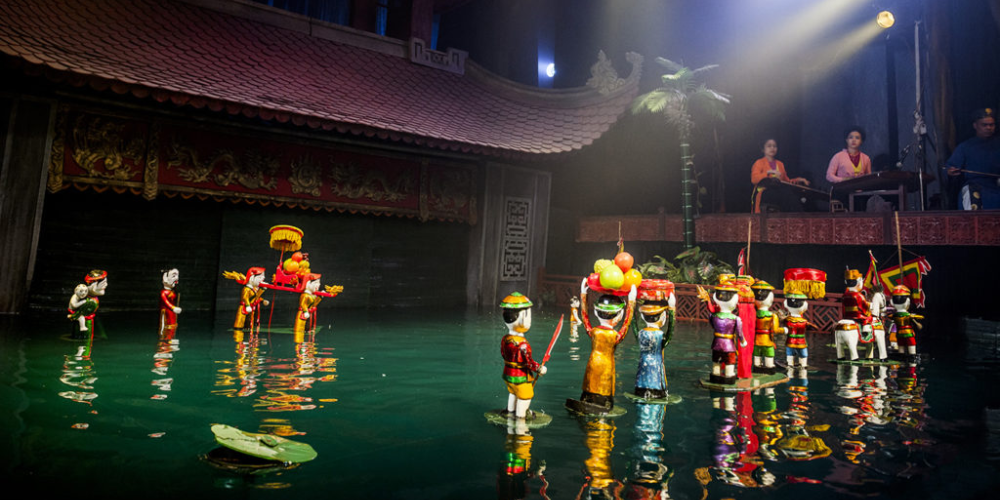
Listening to Ca Tru: Ca Tru originated in the 11th century, its style has many similarities to Japanese geisha rituals and opera performances. Initially, Ca Tru was considered an entertainment for the nobility in the royal palace, then entered the common cultural space of modern Hanoi. Ca Tru has five main performance spaces: Ca Tru cua dinh (singing at the communal house gate to worship gods), Ca Tru cua quyen (enjoying Ca Tru by officials), Ca Tru at home, Ca Tru hat thi, Ca Tru ca quan. Visitors can listen to Ca Tru at the Hanoi Ca Tru Club at 42 Hang Bac, Ca Tru Thang Long 146 Tu Hoa.
Live show: Tinh hoa Bac Bo is a live performance on stage at Thay Pagoda , at the foot of Thay Mountain, Sai Son Commune, Quoc Oai District, Hanoi. The performance takes place on a 4,300 square meter lake, taking visitors on a journey into the lives of Northern farmers through sound and light performances. Most of the actors participating in the live performance are farmers from Quoc Oai District.
In addition to the play, visitors can also experience the traditional culture of the North directly outside the stage with shops selling banh gio, banh te, banh nep, xoi wrapped in lotus leaves and banana leaves, peanut candy, and dou candy. Tourists can buy and eat on small chairs in the middle of the garden to the sound of quan ho music.
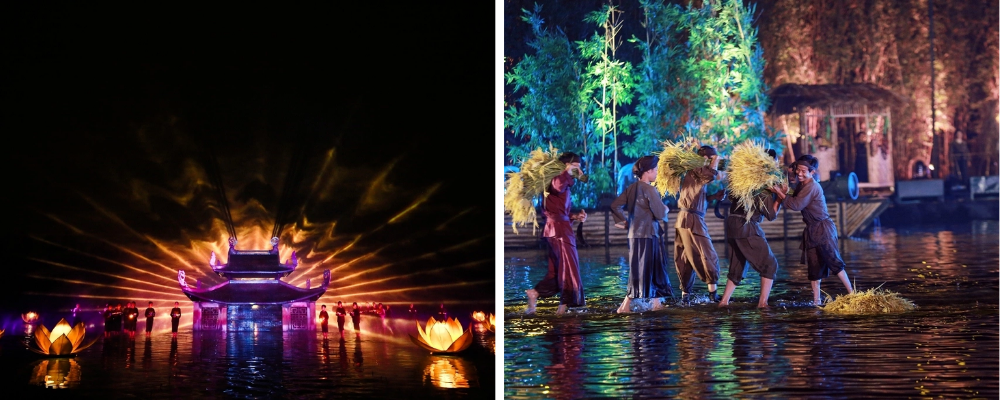
Where to play
SUP on West Lake : Wake up at dawn, you can drive to West Lake and experience water sports such as SUP and kayaking. The best time is usually 5-7am, or in the cool afternoon. You can rent boats and boards at shops on Lac Long Quan, Au Co, Trich Sai streets... with prices starting at 250,000 VND per day.
Panoramic view of Hanoi from above : Coming to Hanoi, you cannot miss the Lotte Observation Deck located on Lieu Giai Street, because this is where you can see the whole view of the capital from the 65th floor. The observatory is made of transparent glass so you can take creative check-in photos at any angle. The observatory is open from 9am until the end of the day.
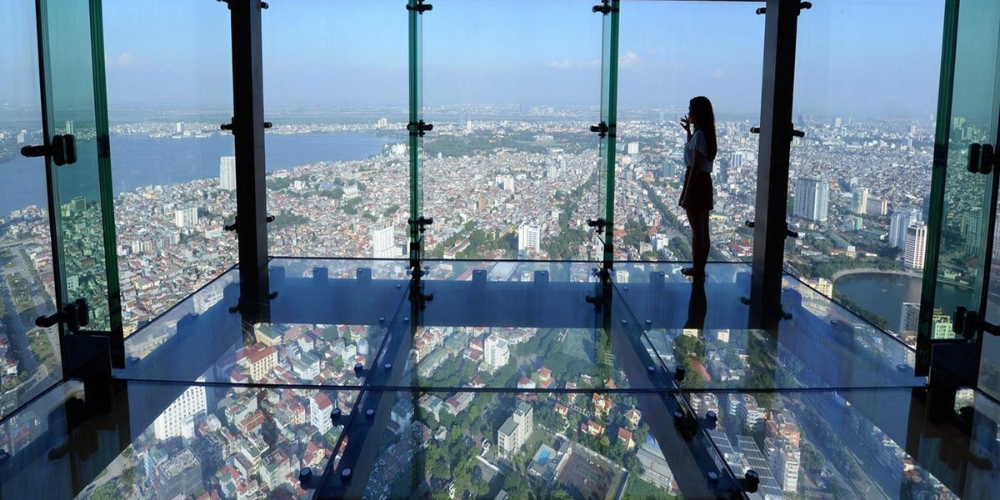
Walking Street : Every week, Hoan Kiem Lake Walking Street opens from 6pm Friday to Sunday, attracting a large number of both locals and foreign tourists. This space has many fun and entertaining activities, including street art performances. Don't forget to experience the "food tour" around the walking street.

Beer Street : In the old quarter, especially in Ta Hien, Bao Khanh, Luong Ngoc Quyen, there are always many places for you to drink beer or other attractively mixed drinks. This is also one of the busiest nightlife spots in the capital.
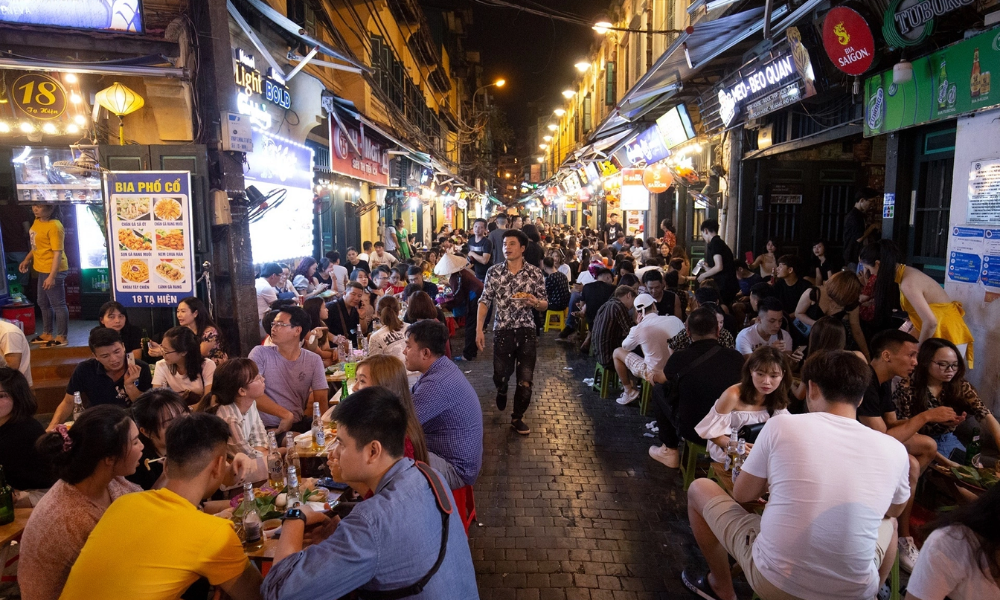
Going to the market: Not Dong Xuan market, Quang Ba flower market and Long Bien wholesale market are two addresses that Western tourists whisper to each other to visit once if they have the opportunity to come to the capital. The market mainly sells flowers and fruits, but "requires" tourists to stay up late and wake up early to fully experience the bustling, bustling atmosphere of a very different Hanoi when night falls.
Located right at the foot of Long Bien Bridge, Long Bien wholesale market is bustling all year round, the most famous of which is the fruit wholesale market. The market starts bustling from 8pm, and becomes more bustling as the night goes on. Quang Ba flower market opens all night but is busiest around 3-4am, with buyers and sellers bustling about. Bouquets of flowers, big and small, are loaded onto carts and come and go.
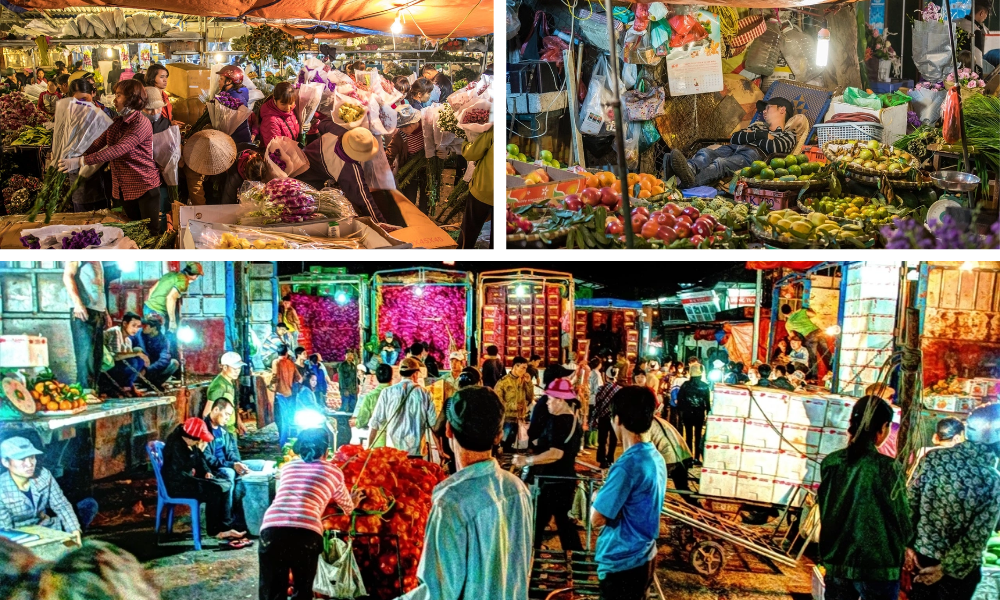
Best Street Food in Hanoi
Pho: When coming to Hanoi, you cannot miss pho, especially beef pho, which usually comes in two main types: well-done and rare. Well-done beef is beef that is boiled in broth, while rare beef is thinly sliced meat that is quickly blanched in boiling water. Then, the seller will arrange the slices of meat on pho noodles, pour the broth over them and serve the diners. Some recommended addresses are Pho Thin, Bat Dan, Tu Lun, Pho Lam on Hang Vai Street, Pho Tram on Yen Ninh Street.
If you want to try other versions, suggested addresses are Nguyet restaurant at 5 Phu Doan, Cham restaurant at 63 Yen Ninh, Lan Ong mixed chicken pho or Ngu Xa rolled pho.

Bun: Hanoians have many bun dishes. The most special are bun cha, bun thang, bun oc, bun moc, bun doc mung...
When talking about the original and long-standing specialties of Hanoi, we cannot fail to mention Bun thang . Hanoians have skillfully processed leftover food after Tet into an elaborate and sophisticated noodle dish. A bowl of Bun thang costs 30,000 - 50,000 VND. Currently, in Hanoi, there are only a few places selling Bun thang, such as Ba Duc restaurant (Cau Go), Ngoc Tuyen restaurant (Dao Tan), Thuan Ly restaurant (Hang Hom)...
Bun cha - a dish often eaten at lunch. Similar to grilled pork vermicelli in the South and Central regions, but Hanoi people's vermicelli is more elaborately marinated. Those who like the old taste can go to the vermicelli shops in Hang Ma and Hang Dong. Those who like bamboo-wrapped vermicelli can go to Buoi market or Dong Xuan market. Or visit the vermicelli shops in Ngoc Khanh, Giang Vo, Le Van Huu, Hang Manh, which are all famous shops in Hanoi.
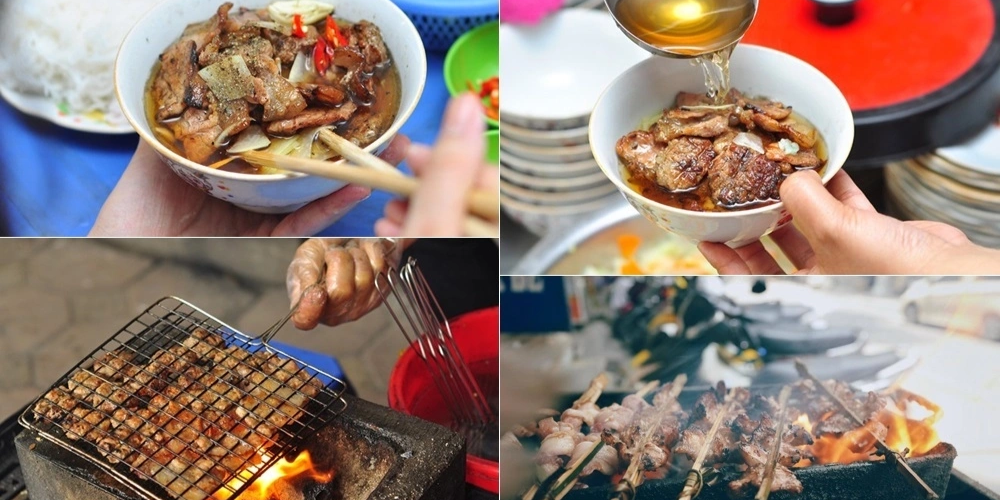
Bun moc in Hanoi costs 20,000 - 40,000 VND. This noodle dish is often sold at shops selling vermicelli with ribs, vermicelli with doc mung, vermicelli with bung... Some famous delicious addresses in Hanoi include Ms. Loan's restaurant (at the beginning of Dien Bien Phu street), Hang Luoc, Hang Trong, Cau Go, alley 18 Ham Long...
Finding vermicelli with snails in Hanoi is not difficult. Diners can go to vermicelli shops in Hai Ba Trung, Dang Dung, Hoe Nhai to eat hot vermicelli. A bowl of vermicelli with snails has about 6-7 pieces of snails, served with crab broth, toppings of beef shank, pig's ear, and sometimes even a balut egg.
Another version is cold vermicelli with snails or vermicelli with snails. Some famous restaurants are Ms. Xuan's vermicelli with snails in O Quan Chuong, or the vermicelli with snails stall at the beginning of Bui Thi Xuan intersection, or the famous Ms. Giang's vermicelli with snails stall on Luong Ngoc Quyen street. Each bowl usually costs from 30,000 to 40,000 VND.
Bun bung is a popular dish of Hanoians. No one knows exactly when it first appeared, but in the 1990s, this noodle dish was sold a lot on the sidewalks of the capital. "Bung" is the word used to refer to dishes that have to be boiled for a long time with a lot of water. Bun bung in Hanoi costs from 30,000 VND per bowl. This dish is often sold in shops selling rib noodles and meatball noodles. Some places that Hanoi diners often visit are the shops on Cau Go Street, Ba Minh Street (Dong Da)...
La Vong fish cake: La Vong fish cake was created in 1871 by the Doan family. From a rustic dish, fish cake gradually became the culinary quintessence of Hanoi to this day. "Fish cake" is made from the best fish, especially catfish. "La Vong" is the image of an ancient general, a talented person with the will to wait for a great opportunity.

The fish meat is carefully deboned, sweet, golden and fragrant, and soaked in spices. Dill and chopped green onions are mixed in the hot fish pan. When eaten, combine with grilled rice paper, vermicelli and shrimp paste - an indispensable ingredient to create a rich flavor. Some suggested addresses: La Vong fish cake at 14 Cha Ca street; Thang Long fish cake at 21 Duong Thanh; Lao Ngu fish cake at 171 Thai Ha...
West Lake Shrimp Cake
Hanoi shrimp cake, or "bánh tôm," is a famous Vietnamese street food originating from the West Lake area. This crispy delicacy is made with a batter of flour, sweet potato, and whole shrimp, deep-fried to golden perfection. It's typically served with fresh herbs, pickled vegetables, and a sweet-and-sour dipping sauce. The dish is loved for its crunchy texture and rich, savory flavor. Bánh tôm reflects the unique culinary charm of Hanoi.
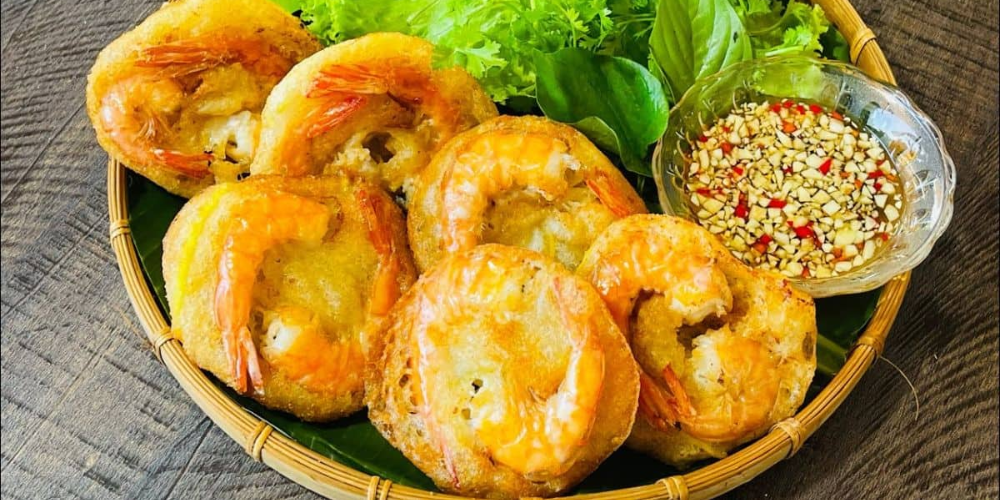
Rice rolls
Thin rice cakes stuffed with pork, wood ear mushrooms, chopped onions, dipped in sweet and sour fish sauce are always a suitable dish for hot summer days. Walking on the streets, visitors will come across many banh cuon shops open in the morning, with skillful and quick hands making banh cuon. Some suggested addresses are Banh Cuon Ba Hanh, No. 26B Tho Xuong; Banh Cuon Ba Xuan, No. 16 Hoe Nhai slope and Long Bien market food court.
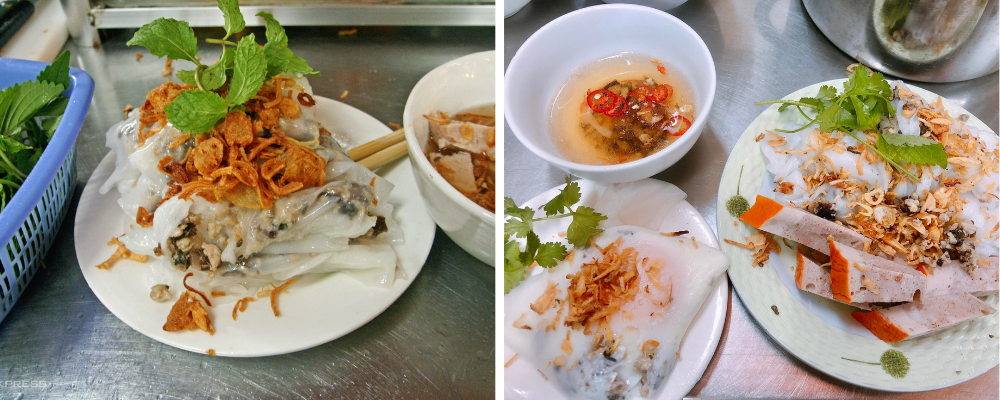
Donuts
In addition to world-famous dishes, Hanoi also has a treasure trove of cakes such as banh goi, stuffed with pork, mushrooms, vermicelli and quail eggs... To balance the flavors, the fatty fried cakes are served with garlic, chili and herbs. Located on Ly Quoc Su Street, Goc Da restaurant specializes in selling savory fried cakes and banh goi, open from 10am to 9:30pm.
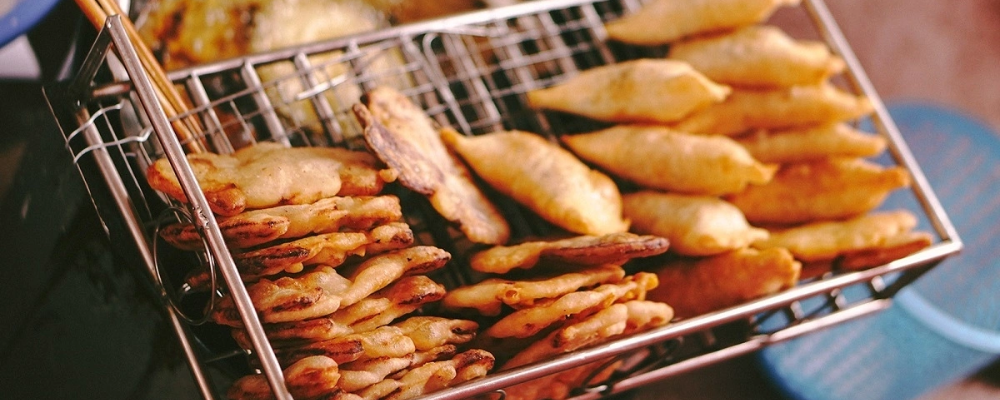
Coffee
Coffee is a characteristic of Hanoi, with many long-standing shops in the Old Quarter. Egg coffee is one of Hanoi's specialties made from whipped eggs mixed with Vietnamese coffee. Egg coffee has a slightly yellow color and is served in a small cup. Diners always have a small spoon to enjoy the cream foam on top like an "appetizer" before drinking the coffee below. Famous shops for delicious egg coffee include Dinh, Giang, Pho Co Coffee, Loading T, All Day Coffee... Each cup costs from 25,000 VND.
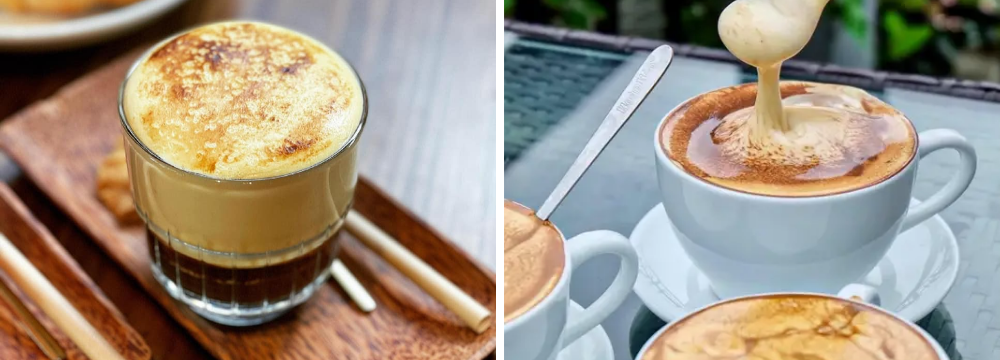
What to buy as a gift
In addition to dried apricots, green rice cakes, and lotus tea, visitors to Hanoi can buy silk in Van Phuc village or Bat Trang pottery as gifts for relatives and friends.
Dried apricots : With a full range of sour, spicy, salty, and sweet flavors, like the quintessence of Hanoi cuisine, dried apricots are a gift that many people choose to buy when leaving Hanoi. The most famous address for this snack is Hang Duong Street. Visitors can find here their favorite types of dried apricots such as apricots, plums, ginger, sour plums, star fruit, lemons, kumquats, persimmons, peaches, green plums, tamarinds, etc. However, if you buy them as gifts for people from the South, you should choose sour apricots, because they have a sweet taste made from the sour fruit that is very typical of Hanoi. Depending on the type, dried apricots cost about 100,000 - 150,000 VND per kg.
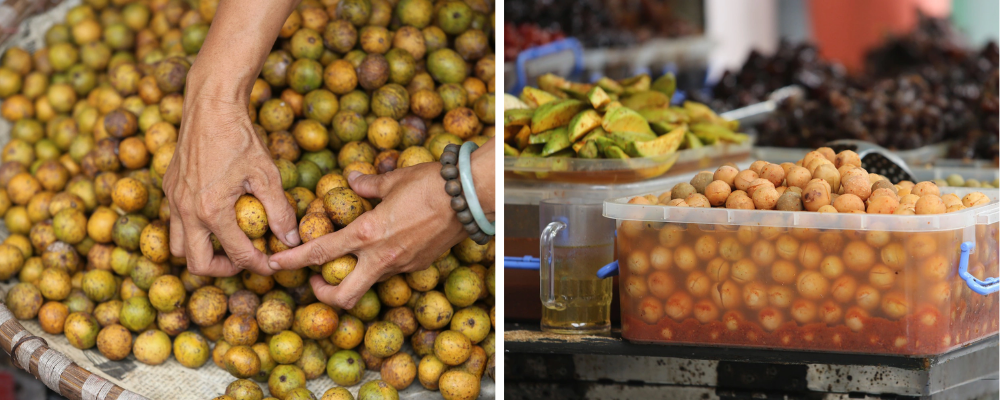
Com : The scent of Vong village's Com has long created a very unique charm for the capital's cuisine. However, because it is only available in the fall, Hang Than Com cake is the perfect alternative for many tourists. The sticky rice cake is thick on the outside, the green bean filling is rich with coconut inside, and the natural aroma of grapefruit is faint.
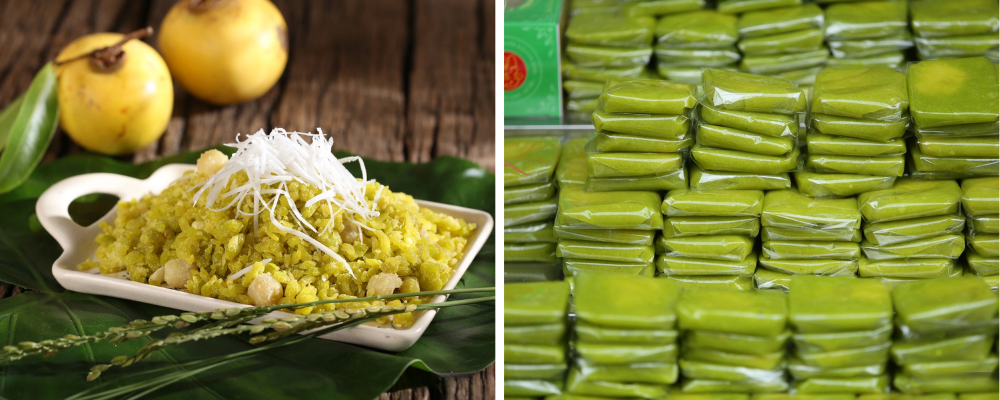
Lotus tea: West Lake lotus tea will definitely be a precious gift for relatives and friends after visiting Hanoi. Because brewing lotus tea is an art that takes a lot of time and effort. After being selected from the best types of dried tea leaves, they will be brewed 5-7 times with lotus rice (white grains on the lotus stamens) to absorb the aroma and flavor. The lotus used to brew must be grown in the ponds in West Lake such as Nhat Tan and Quang Ba because it is the most fragrant and produces the most rice.

